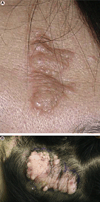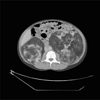Tuberous sclerosis complex diagnostic criteria update: recommendations of the 2012 Iinternational Tuberous Sclerosis Complex Consensus Conference
- PMID: 24053982
- PMCID: PMC4080684
- DOI: 10.1016/j.pediatrneurol.2013.08.001
Tuberous sclerosis complex diagnostic criteria update: recommendations of the 2012 Iinternational Tuberous Sclerosis Complex Consensus Conference
Abstract
Background: Tuberous sclerosis complex is highly variable in clinical presentation and findings. Disease manifestations continue to develop over the lifetime of an affected individual. Accurate diagnosis is fundamental to implementation of appropriate medical surveillance and treatment. Although significant advances have been made in the past 15 years in the understanding and treatment of tuberous sclerosis complex, current clinical diagnostic criteria have not been critically evaluated or updated since the last clinical consensus conference in 1998.
Methods: The 2012 International Tuberous Sclerosis Complex Consensus Group, comprising 79 specialists from 14 countries, was organized into 12 subcommittees, each led by a clinician with advanced expertise in tuberous sclerosis complex and the relevant medical subspecialty. Each subcommittee focused on a specific disease area with important diagnostic implications and was charged with reviewing prevalence and specificity of disease-associated clinical findings and their impact on suspecting and confirming the diagnosis of tuberous sclerosis complex.
Results: Clinical features of tuberous sclerosis complex continue to be a principal means of diagnosis. Key changes compared with 1998 criteria are the new inclusion of genetic testing results and reducing diagnostic classes from three (possible, probable, and definite) to two (possible, definite). Additional minor changes to specific criterion were made for additional clarification and simplification.
Conclusions: The 2012 International Tuberous Sclerosis Complex Diagnostic Criteria provide current, updated means using best available evidence to establish diagnosis of tuberous sclerosis complex in affected individuals.
Keywords: clinical features; diagnostic criteria; tuberous sclerosis.
Copyright © 2013 Elsevier Inc. All rights reserved.
Figures













Comment in
-
Are diagnostic criteria for tuberous sclerosis still relevant?Pediatr Neurol. 2013 Oct;49(4):223-4. doi: 10.1016/j.pediatrneurol.2013.08.003. Pediatr Neurol. 2013. PMID: 24053981 No abstract available.
-
Prenatal diagnosis of hemimegalencephaly revealing tuberous sclerosis complex.Ultrasound Obstet Gynecol. 2020 May;55(5):688-689. doi: 10.1002/uog.21874. Ultrasound Obstet Gynecol. 2020. PMID: 31568608 No abstract available.
References
-
- von Recklinghausen F. Die Lymphelfasse und ihre Beziehung zum Bindegewebe. [German]. Berlin: A. Hirschwald; 1862.
-
- Northrup H, Koenig M, Au K. Tuberous sclerosis complex. GeneReviews. 2011 http://www.genetests.org.
-
- O’Callaghan F, Shiell A, Osborne J, Martyn C. Prevalence of tuberous sclerosis estimated by capture-recapture analysis. Lancet. 1998;352:318–319. - PubMed
Publication types
MeSH terms
Grants and funding
LinkOut - more resources
Full Text Sources
Other Literature Sources
Medical
Miscellaneous

